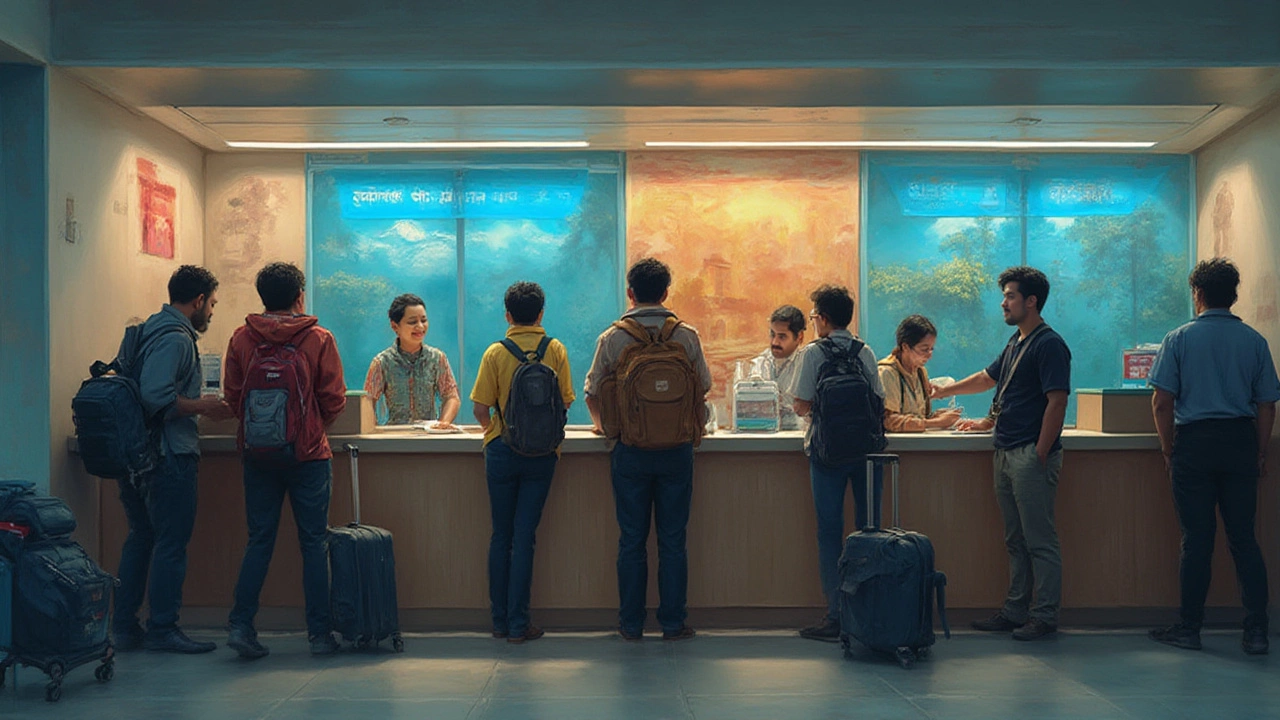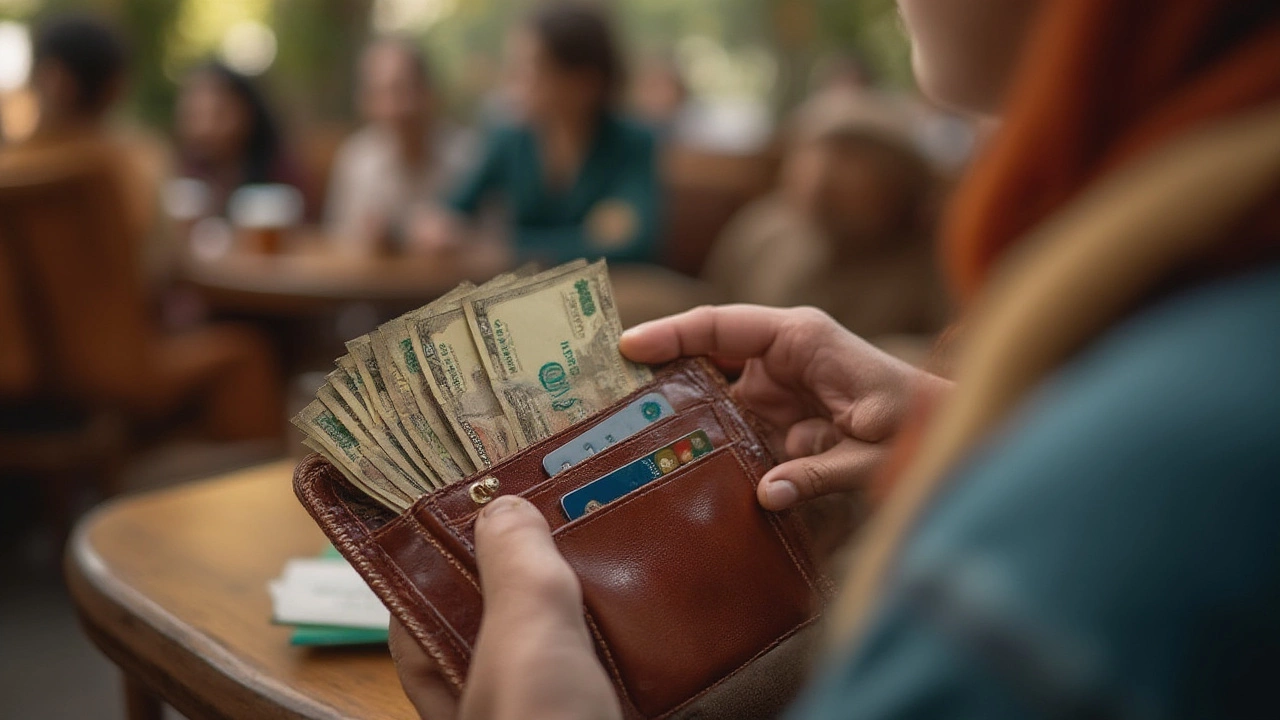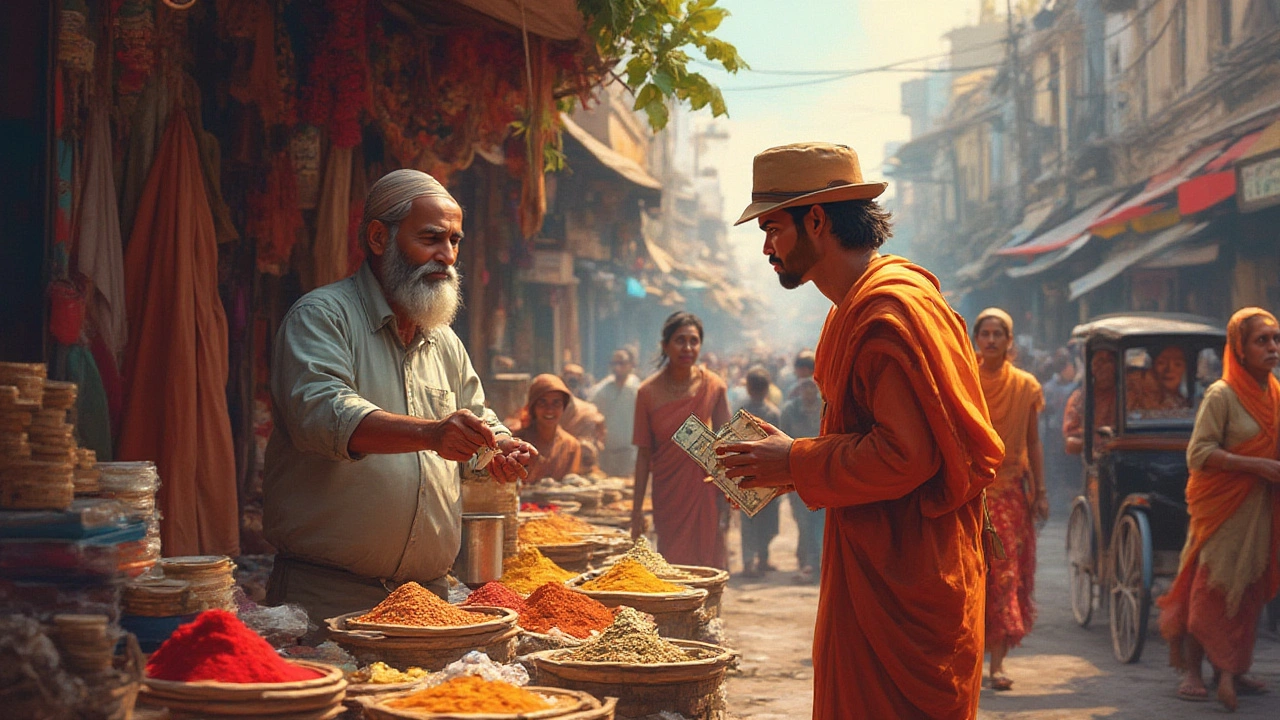You step off the plane after a brutal 16-hour haul from JFK or LAX. Your backpack’s heavy, you’re half-awake and dreaming of chai, when suddenly, you realize you forgot to change your dollars. Panic? Not yet. US currency is recognized almost everywhere around the globe, but does that hold true in India? Some stories online say you can glide through with greenbacks, others say it’s rupees or nothing. The truth is right in between. The rules are strict, but the reality is more interesting than you’d think.
Can You Spend US Dollars in India?
India isn’t your typical Southeast Asian backpacker hotspot where US dollars swap hands as easily as postcards. Here, the Indian rupee reigns—officially and fiercely. Businesses, from the largest malls in Mumbai to the smallest chai stalls in Varanasi, are required by law to accept only Indian currency. You can flash your Benjamins all you want—at the corner shop, it’s going to be a polite shake of the head. If you’re staying in posh hotels or flying out of major airports, you might spot the odd sign advertising prices in USD. Don’t get fooled, though. Even in these places, payment is routed through an official conversion at the front desk or duty-free shop. Don’t expect to pay cab drivers or street vendors directly in dollars, because they won’t legally accept them.
But there’s more to it. Some currency changers—especially in bustling tourist pockets in Delhi, Goa, or Kerala—might agree to a quick exchange on the side. It’s tempting, sure, but it’s often at bad rates and less-than-legal. In normal shops, restaurants, and markets, even big chains or famous attractions, cashiers will point you to the nearest ATM or currency booth instead. The bottom line? If you crave street food, souvenirs, or just want to hop on a rickshaw, you’ll need rupees every time.

Where and How to Change Your US Dollars in India
Banks and official currency exchanges are your safest bet. Right at the airport arrivals hall, you’ll spot IRS (Indian Rupee Services) or other major licensed counters, but don’t expect the best rates here—these booths know you’re desperate after landing, and the margins are wide. If you can hold off, head to a bank or an authorized Forex bureau in town. You’ll often need your passport (with a valid visa) for every transaction; India’s pretty serious about paperwork. Ask plainly for the day’s rate and check if there are any commission fees. If you’re dealing with staff at a five-star hotel or an official currency booth, expect professionalism but still double-check the math and receipts. Indians aren’t shy about counting out your notes in front of you—feel free to do the same back.
Black market exchanges? They sound adventurous, but skipping official routes means risking counterfeit money or getting cheated. Some unscrupulous folks hang outside airports or train stations, ready to pounce with seemingly good offers, but their deals often fall apart under a magnifying glass. The government’s been cracking down hard on illegal exchanges since the demonetization drive in 2016, so stick with licensed options. A few hotels in major city centers will exchange money only for guests, and the rates are usually slightly better than airports but worse than banks downtown. International airports often have the highest rates, so, if you can, exchange only what you need for a taxi and the first meal, then handle the rest in town.
ATMs are everywhere in cities—look for branches of State Bank of India, HDFC, ICICI, or Axis Bank. Many machines accept foreign debit and credit cards, but always choose to be charged in rupees rather than your home currency. Withdrawals come with small fees, but rates are usually solid. Skip ATMs that look lonely, poorly lit, or tucked into far corners, just to be safe. In smaller towns or rural areas, ATMs are fewer and sometimes run dry, so plan ahead. And yes, Indian ATMs have an annoying habit of running out of cash on major festival weekends, so don’t procrastinate if you see a crowd forming.

Tips for Handling Money Smoothly Across India
The Indian rupee breaks into denominations that can feel odd at first: from ₹10 coins to crisp ₹500 and ₹2000 bills. Most daily purchases—tuk-tuks, snacks, metro rides—will set you back between ₹10 and ₹100. Large notes can be weirdly hard to break, especially in smaller villages, so always pocket some change when you get it. When withdrawing cash, ask the teller for a mix of small and medium bills. Some shopkeepers groan if you offer them a ₹2000 note for a ₹50 purchase, and they aren’t faking it—they often don’t have change.
Card payments are accepted more widely now, but still not everywhere. Big hotels, upscale restaurants, and fancy stores swipe with Visa and Mastercard, sometimes Amex. But for rickshaws, local markets, and chai on the corner, cash is king. Digital payments via apps like Paytm, PhonePe, or Google Pay are exploding in popularity, even in small towns, but you’ll need an Indian phone number to register them—tourists rarely pull this off without serious effort. Stick with cash unless you’re in big-city malls or high-end places.
Counterfeit money does exist here—watch out especially for large rupee bills. Locals check for the watermark and the security thread. If something looks off or feels weird, hand it back right away. Official government campaigns have pushed people to avoid outdated notes, especially since the surprise demonetization pulled old ₹500 and ₹1000 bills out of circulation in late 2016. Now, only newer versions of these denominations are legal tender.
Looking to tip? India isn’t America—tipping is appreciated but not expected everywhere. Rounding up at restaurants, offering small change to taxi drivers, or slipping porters a few rupees is common courtesy. Over-tipping might embarrass the receiver. In luxury hotels, service charges are sometimes baked into the bill, so check before double-tipping. Set aside some ₹10 or ₹20 notes for such moments, and it makes you look prepared and polite.
Lastly, if you’re bringing a sizable amount of cash into the country, the legal limit without declaration is $5,000 in currency or up to $10,000 including other monetary forms like traveler’s checks. Go over, and you’ll need to fill out a Customs form. Most travelers never get close to that, but it's a headache if you do. Always keep those receipts from each exchange—the police or customs sometimes ask to see proof if you’re carrying lots of rupees when leaving.
When it comes to India, think rupees, not dollars. Have small denominations, watch for fake notes, and choose trusted places for your money needs. You’ll travel smoother, spend smarter, and stress less about every snack, ride, and adventure waiting outside your hotel lobby.
